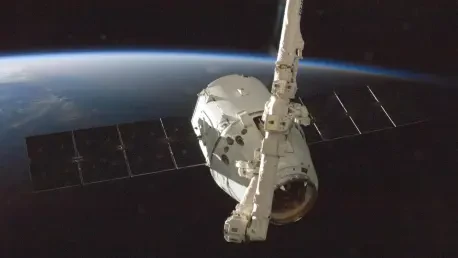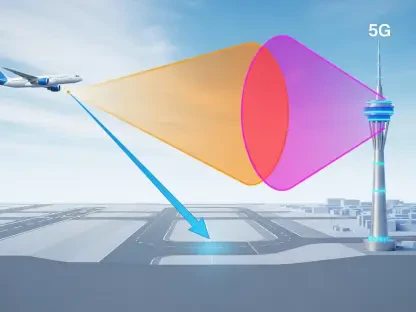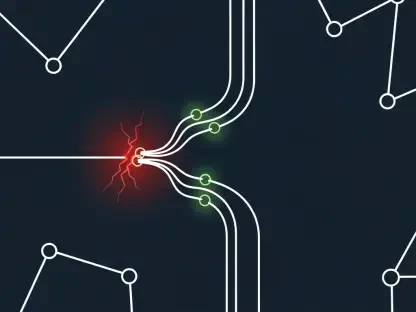In a breakthrough that heralds a new era for satellite imaging, NASA has unveiled the innovative Dynamic Targeting technology. This cutting-edge advancement promises to redefine how satellites interact with and analyze their environments. By leveraging artificial intelligence, Dynamic Targeting enables satellites to autonomously parse through and interpret visual data from space within a mere 90 seconds, effectively removing the need for human intervention. Traditionally, obstacles like cloud cover have posed significant challenges in satellite imaging, often resulting in the acquisition of unusable data. By allowing satellites to predict their path and circumvent cloudy areas, Dynamic Targeting emerges as a pivotal solution for enhancing image quality and scientific data collection.
The Functionality and Advantages of Dynamic Targeting
The dynamic capabilities of this technology are rooted in its ability to mimic human-like image interpretation. Developed by NASA’s Jet Propulsion Laboratory, Dynamic Targeting equips satellites with the discernment necessary to make real-time decisions on what visual data is worth capturing. Rather than capturing everything on its path indiscriminately, the satellite can process incoming visual data, identify noteworthy features such as clouds, and promptly decide either to capture or bypass an image. This rapid and autonomous decision-making process, completed in less than a minute and a half, offers substantial benefits, particularly for Earth-observing satellites hindered by atmospheric elements.
One of the hallmark features of Dynamic Targeting is its capacity to detect cloud formations up to 300 miles ahead of a satellite’s orbital route. By identifying these meteorological barriers, satellites can reserve their resources for moments when the view is unobstructed. When clear skies present themselves, these satellites capture optimal views, whereas cloudy conditions trigger a temporary halt in image collection, conserving time, storage, and considerable bandwidth. As explained by Steve Chien, AI technical fellow at JPL, “As opposed to merely observing colored pixels, this technology grants the ability to perceive patterns and phenomena such as wildfires and strategically guides its instruments accordingly.”
Testing and Implementation on CogniSAT-6
The initial tests of Dynamic Targeting were conducted using CogniSAT-6, a CubeSat operational since March 2024, equipped with a forward-looking imager designed for data processing. In simulations, the CubeSat showcased its adaptability, tilting up to 50 degrees to capture preview shots and employing onboard algorithms to shift focus back to areas free of cloud cover. Impressively, this entire sequence transpired as the satellite hurtled through space at velocities nearing 17,000 mph. The success in avoiding cloud obstructions has prepared NASA for the next chapter in this technology’s evolution, which involves targeting the clouds themselves.
By training specific algorithms, NASA aims to expand Dynamic Targeting’s applications to monitor weather phenomena that are fleeting and difficult to capture, such as deep convective ice storms. These specialized algorithms will enable satellites to identify key storm structures, facilitating high-resolution data collection via radar as they pass over these meteorological events. In parallel, the technology will be honed to detect other transient occurrences such as wildfires and volcanic eruptions, where the immediacy and adaptability of this AI-driven targeting prove invaluable for real-time observation and response.
Future Implications and Broader Applications
While the primary aim remains optimizing Earth-observing endeavors, the broader vision for Dynamic Targeting extends its potential benefits to interplanetary explorations. Future applications could incorporate observing dynamic environments on other celestial bodies, such as detecting dust storms on Mars, observing plumes on comets, or even identifying geysers on icy moons. The foundational inspiration for these applications comes from AI methodologies implemented during past missions, notably the European Space Agency’s Rosetta orbiter’s detection of comet eruptions.
In addition to individual satellites, NASA envisions expanding the Dynamic Targeting innovation to entire satellite constellations. This Federated Autonomous Measurement project proposes a synchronized system where a leading satellite, upon identifying a significant event, communicates the information to its counterparts. The subsequent reorientation of trailing satellites ensures concentrated focus and dynamic evaluations of the phenomena, maximizing efficiency and data precision.
The Path Forward
NASA has made a remarkable stride in satellite imaging technology with the introduction of Dynamic Targeting, an innovative development set to transform how satellites perceive and assess their surroundings. This state-of-the-art technology employs artificial intelligence to empower satellites to independently interpret visual data acquired from space, drastically trimming this process down to just 90 seconds and eliminating dependence on human intervention. One of the historical issues with satellite imaging has been obstacles like cloud cover, which have frequently resulted in data being unusable. Dynamic Targeting addresses these challenges by enabling satellites to anticipate their routes and steer clear of cloudy regions, making valuable contributions to improving image quality and scientific information collection. As a pivotal technological advancement, Dynamic Targeting promises to bolster the accuracy and efficiency of satellite-based research, marking a promising new chapter in remote sensing capabilities and helping scientists in numerous fields.









